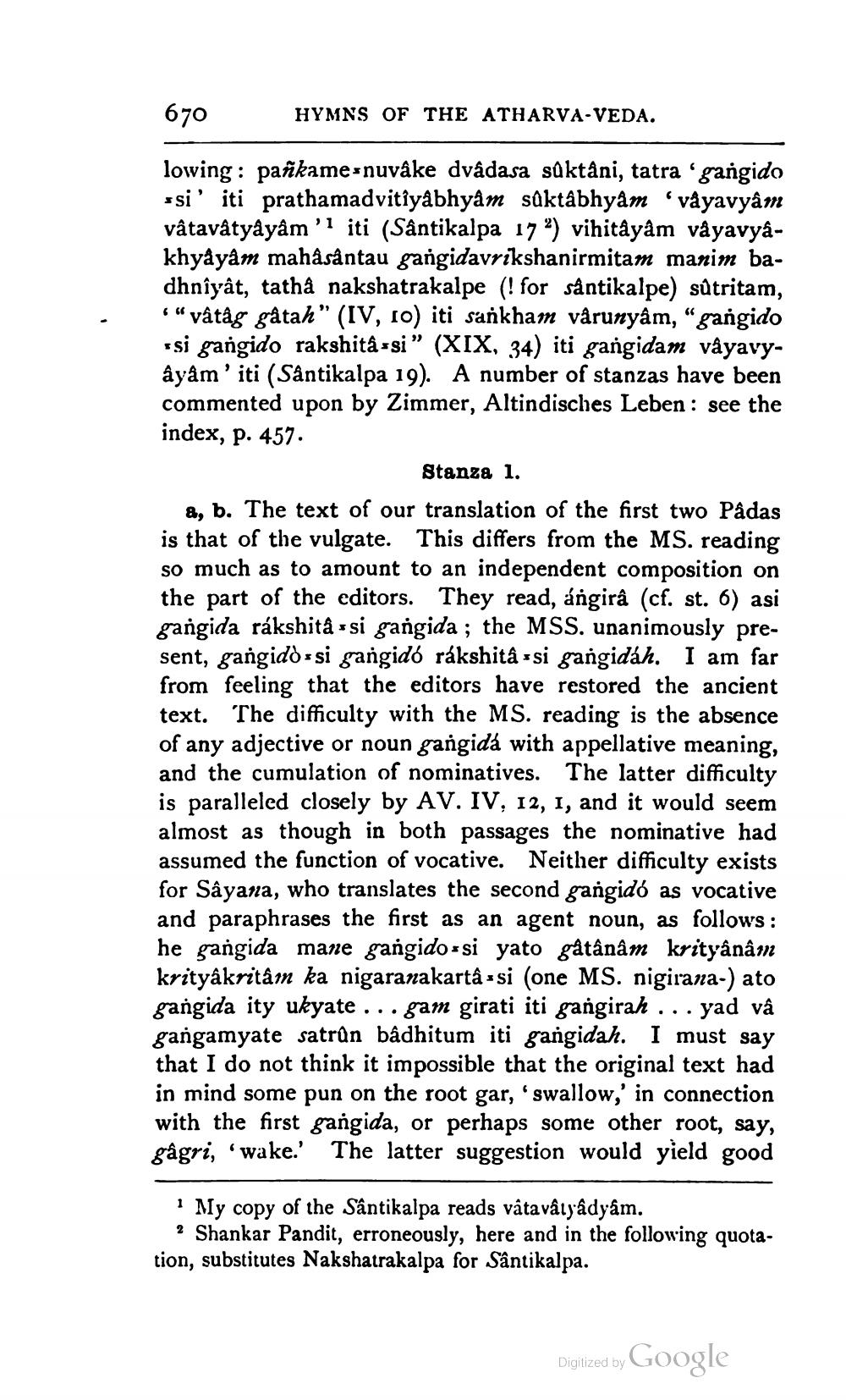________________
HYMNS OF THE ATHARVA-VEDA.
lowing: pañkamesnuvâke dvadasa suktåni, tatra 'gangido ssi' iti prathamadvitiyabhyam saktabhyam våyavyâm vâtavatyäyâm'i iti (Sântikalpa 17 ?) vihitâyâm våyavyakhyâyam mahâsântau gangidavrikshanirmitam manim badhnîyât, tathå nakshatrakalpe (! for såntikalpe) sûtritam, " "vâtåg gâtah" (IV, 10) iti sankham várunyâm, "gangido ssi gangido rakshita -si” (XIX, 34) iti gangidam våyavyâyâm'iti (Såntikalpa 19). A number of stanzas have been commented upon by Zimmer, Altindisches Leben : see the index, p. 457.
Stanza 1. a, b. The text of our translation of the first two Pâdas is that of the vulgate. This differs from the MS. reading so much as to amount to an independent composition on the part of the editors. They read, angirâ (cf. st. 6) asi gangida rákshitåssi gangida ; the MSS. unanimously present, gangidòssi gangidó rákshitâ ssi gangidáh. I am far from feeling that the editors have restored the ancient text. The difficulty with the MS. reading is the absence of any adjective or noun gangids with appellative meaning, and the cumulation of nominatives. The latter difficulty is paralleled closely by AV. IV, 12, 1, and it would seem almost as though in both passages the nominative had assumed the function of vocative. Neither difficulty exists for Sâyana, who translates the second gangidó as vocative and paraphrases the first as an agent noun, as follows: he gangida mane gangido-si yato gåtânâm krityânâm krityâkritâmn ka nigaranakartâ ssi (one MS. nigirana-) ato gangida ity ukyate ... gam girati iti gangirah ... yad vâ gangamyate satrûn bâdhitum iti gangidah. I must say that I do not think it impossible that the original text had in mind some pun on the root gar, 'swallow,' in connection with the first gangida, or perhaps some other root, say, gâgri, 'wake.' The latter suggestion would yield good
My copy of the Sântikalpa reads vâta vâryâdyam. ? Shankar Pandit, erroneously, here and in the following quotation, substitutes Nakshatrakalpa for Sântikalpa.
Digized by Google




